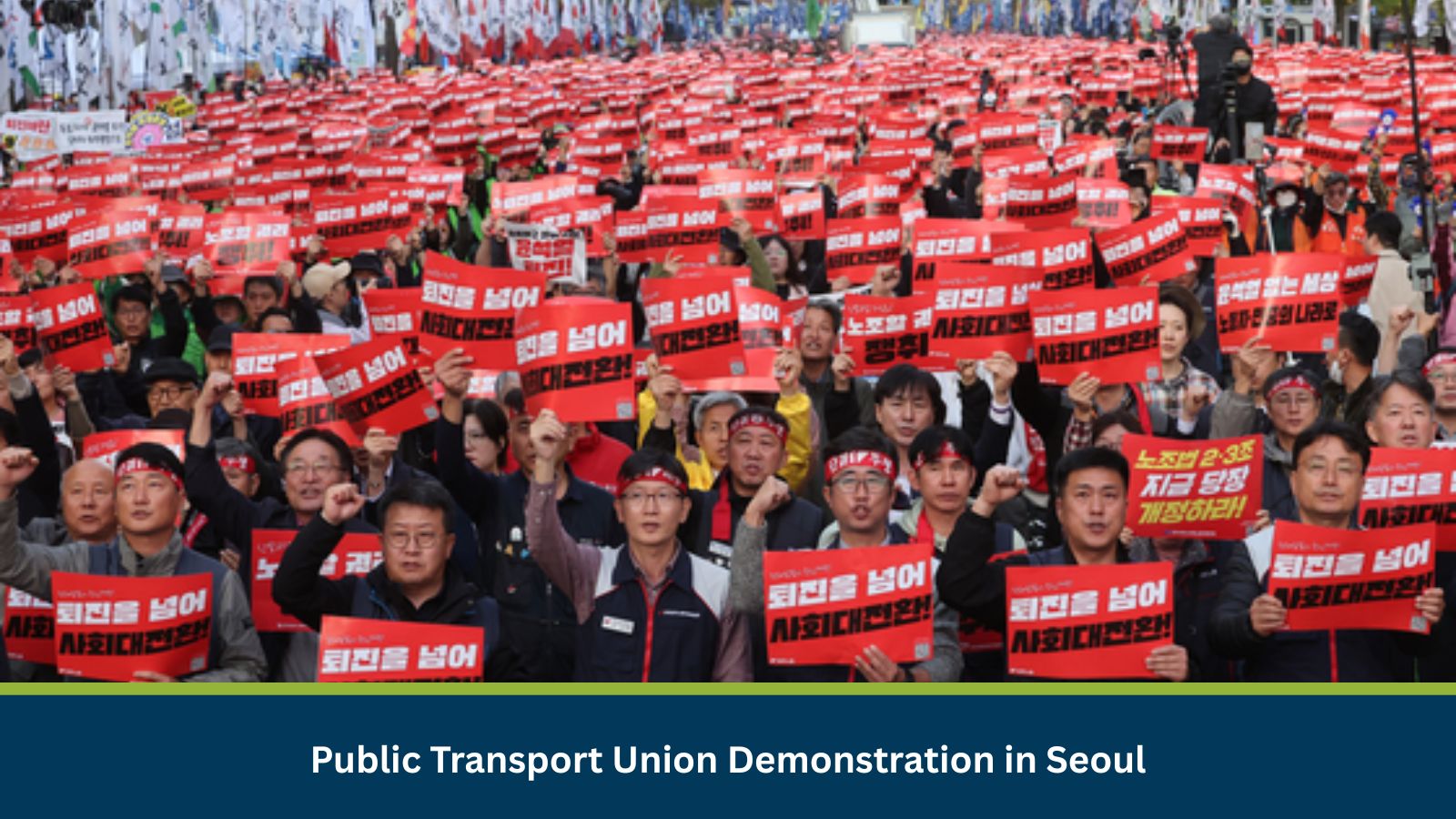This risk assessment evaluates a demonstration by the Public Transport Union in Seoul on Thursday, July 24. It provides insights for businesses to manage potential disruptions to urban mobility, operational continuity, and employee commutes during this civil disturbance event.
What is Risk Analysis in the Context of Civil Disturbance Events?
Civil disturbance risk assessments evaluate how protests and demonstrations impact urban mobility, workplace safety, supply chains, and public services. They enable businesses to prepare for disruptions, mitigate risks to operations, and ensure staff welfare through timely intelligence.
Executive Summary
- Date of Incident: 24 July 2025
- Location: Seoul, South Korea
- Risk Category: Civil Disturbance
- Severity Score: 3/5
- Confidence Level: 90%
A demonstration by the Public Transport Union in Seoul on Thursday, July 24, signals a likely period of moderate disruption to urban mobility. Drawing on historical analyses of similar union-led protests in South Korea, such events typically manifest as short-to-medium term challenges, rarely escalating into widespread violence or long-term infrastructural damage. The duration window for significant operational impact is forecasted to be 24-72 hours, potentially extending to 7 days if negotiations falter or if other transport sectors initiate sympathetic actions. The severity is assessed as moderate, primarily impacting daily commutes and local business operations rather than posing high risks to life or critical infrastructure.
Known Hotspots and Sensitive Areas
Sensitive areas include Seoul City Hall, Gwanghwamun Plaza, and the Government Complex Seoul. The National Assembly in Yeouido could also become a target if the protest escalates or broadens to include national-level demands. Major commercial districts such as Myeong-dong and Jongno-gu will experience indirect impact due to reduced accessibility.
Impact on Transportation and Services
- Road Closures: Anticipate closures or heavy congestion on major arterial roads in central Seoul, particularly Sejong-daero leading to Gwanghwamun Plaza and Seoul City Hall, and key routes within Jongno-gu and Euljiro . These areas are frequent sites for large-scale demonstrations.
- Transport Disruption: The primary mode of disruption will be to bus services across Seoul, particularly those operating through central districts. Depending on the scale and duration, ‘work-to-rule’ protests or full strikes by bus drivers will lead to severe delays and cancellations.
- Utility Damage: There is no historical precedent for public transport union protests in Seoul causing damage to utilities. Any impact on utilities is highly unlikely and not within the scope of typical protest actions.
- Business Operations: Similar bus driver or general transport union protests have led to significant disruptions in employee commutes and reduced foot traffic in affected commercial areas, directly impacting daily business activities.
Recommended Actions
- Implement a flexible work policy for all employees affected by public transport disruptions in Seoul on Thursday, July 24, encouraging remote work.
- Proactively communicate with clients, partners, and stakeholders via official channels regarding potential service delays, limited in-person accessibility, or adjusted business hours.
- Activate the internal security and operations protocol to continuously monitor real-time updates on protest locations and traffic advisories in Seoul, providing immediate alerts to employees and securing physical assets and premises.
- Coordinate with HR and departmental leads to ensure critical business functions have contingency staffing plans.
Emergency Contacts
- Police: 100
- Fire Department: 102
- Ambulance: 101
- Official Government:
- National Police Agency (English): 112
- Ministry of Land, Infrastructure and Transport (English): +82-44-201-3000
Final Thoughts
The baseline scenario anticipates a contained demonstration primarily affecting bus routes and traffic congestion in central Seoul, with services normalizing within three days. However, a moderate escalation could involve an intermittent ‘work-to-rule’ action or a multi-day strike by public transport workers, leading to more widespread and unpredictable road closures. Businesses should implement flexible work policies, ensure clear communication with stakeholders, and continuously monitor the situation to mitigate potential impacts.
Stay ahead of operational risks with real-time alerts, scenario modeling, and expert advisories.
MitKat helps organisations navigate uncertain times by providing comprehensive insights about the evolving risk landscape. We offer various services including Risk consulting and Security Design, Protective Services, and cyber security services which ensure organisations become Risk Intelligent. Our AI-powered operational risk monitoring tool, datasurfr combined with expert insight enables companies to stay abreast of evolving operational risks and emerging developments.






